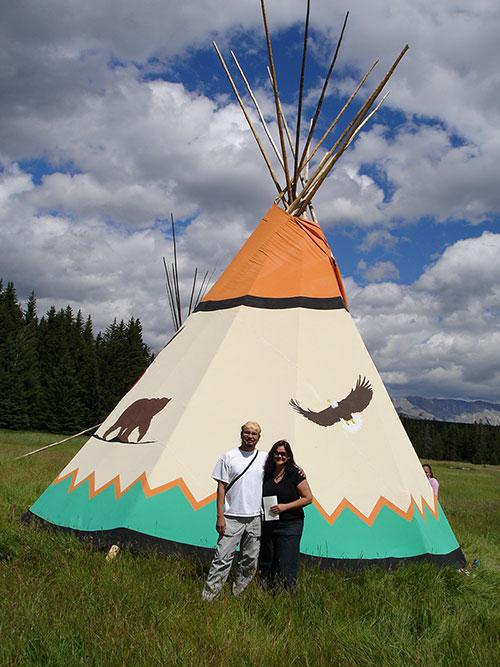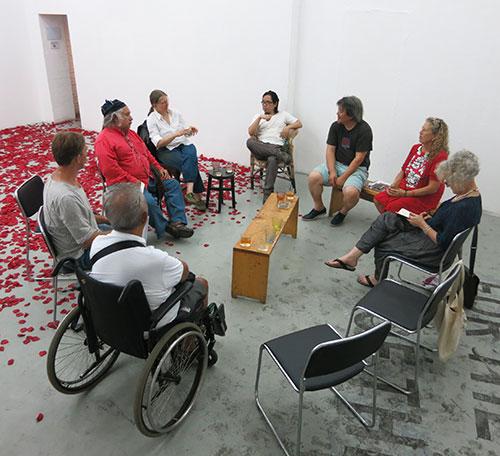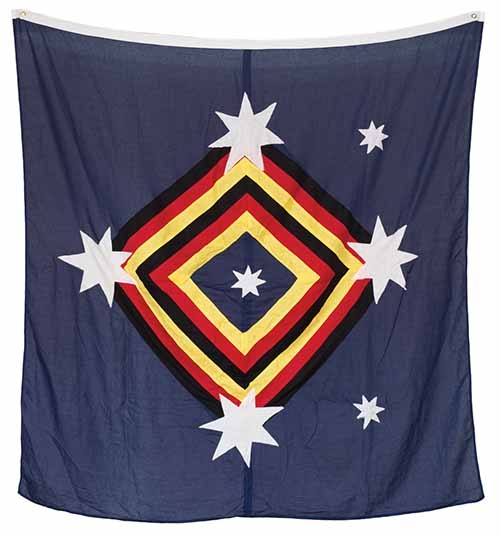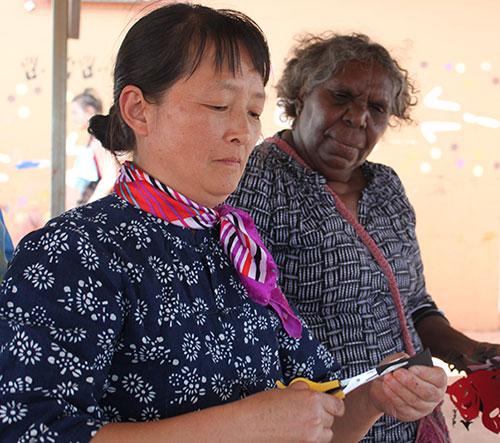
Jean Baudrillard once famously stated that ‘‘the Gulf War did not take place’’. What he meant was that imagery of the Gulf War, as received by the public through controlled media channels, was in stark contrast to lived reality in Iraq. What we saw was simulacra, an en masse misrepresentation made possible by a burgeoning media industry. Theatres, curated by Dale Buckley, Laetitia Wilson and Guy Louden, a highlight of the 2015 Perth International Arts Festival, explored this troubling dynamic between images produced within zones of conflict and the spectacle of a wider military-entertainment complex.
Theatres featured video work by eleven international artists spread across two very different venues, the artist run initiative, Moana Project Space, and Hackett Hall at the Western Australian Museum. Moana, a small single-room space, presented works on loop on their own LCD screens with attached headphones allowing viewers to come and go at their leisure. Of note was Richard Mosse’s Killcam (2008), which documents US soldiers playing war video games in hospital while recovering from serious wounds and amputations sustained in combat.
In a similar vein, Freedom (2010) by Eva and Franco Mattes shows a performance conducted within the online world of the military game Counter-Strike. Inside the game, the artist pleads with other players to be spared, only to be killed over and over again. Both these works link military combat games, an industry which now rivals blockbuster films, with the ongoing wars on which they are based. In doing so they make us not only speculate upon the propagandistic function of these games, but also on modern day warfare’s role in generating value for entertainment industries.
Across town, the second act of the exhibition was staged at the Western Australia Museum. Hackett Hall is a grandiose and historic space and here the works were suitably projected in a large format allowing for a more collective and cinematic viewing. Although each work had its own screen, they were shown one by one in sequence, like a show reel distributed across physical space, each viewing therefore punctuated by a short resetting walk. Here some videos addressed the sinister beauty found in war.
Ahmet Ögüt’s These Things we Count (2008) pans across an airplane graveyard while the planes are counted in Kurdish, Turkish and English, implying that both culture and conflict is created at borders. Richard Mosse makes another appearance with Untitled (Iraq) (2009), which depicts rusted bullet-ridden debris in a desert landscape while Iraqi place names are read out in alphabetical order. Both works recontextualise the objects depicted as modernist sculpture and their sonorous readings as Uncreative Poetry, their overall effect reframing the battleground as a contemporary museum display.
This thin moral line regarding the aestheticisation of war and conflict is further knowingly unpacked in Cyprien Gaillard’s work Desniansky Raion (2009). It presents a lusciously scored ‘‘electronic-opera’’ which juxtaposes street fights in St Petersburg with aerial views of modernist housing complexes on the outskirts of Kiev. This work is far-reaching, referencing everything from 18th-century historical battle paintings to Stonehenge. By so doing it leaves you with the bleak feeling that humankind will forever seek conquest, with spectacle and monument-making a by-product of this entropic process. Amongst the wash of synth pop of Gaillard’s work and flanked all around by works filled with the imagery of the second Iraq war, it is possible to feel overwhelmed with a strange type of mid-millennial nostalgia.
Looked at as a whole Theatres does seem quite fenced in, nearly all the works take their subject as the Middle East between the 2003 invasion of Iraq and the Arab Spring of 2010. This is not necessarily good or bad, an exhibition sets its own parameters. But when the rest of the exhibition is contrasted against the macroscopic viewpoint of Gaillard’s work this delimitation becomes most apparent. While Theatres impressively handles its chosen geographically and temporally confined territory, Cyprien Gaillard’s work sits like an open window hinting at an expanded theoretical scope.
Hiwa K’s This Lemon Taste like Apple (2013) begins to show us this change. In this video the artist plays the theme from the movie Once Upon a Time in the West (1968) during a protest which turns violent in northern Iraq. The footage is candid, almost like an iPhone video, and hints at a change which has occurred in the last five years. With the expansion of online media and recording technology, frontline images have increasingly become prone to circulation. The image therefore is an increasingly active tool used within dynamic processes of liberalisation and radicalisation, in more or less equal measures.
Conflict has seen all sides using imagery to recruit hearts and minds, from the citizen journalism of the Arab Spring conducted through Twitter, to the striking YouTube viral videos of ISIS designed for consumption in the West. The image no longer represents or records, but actively facilitates conflict. The image itself has become weaponised.












